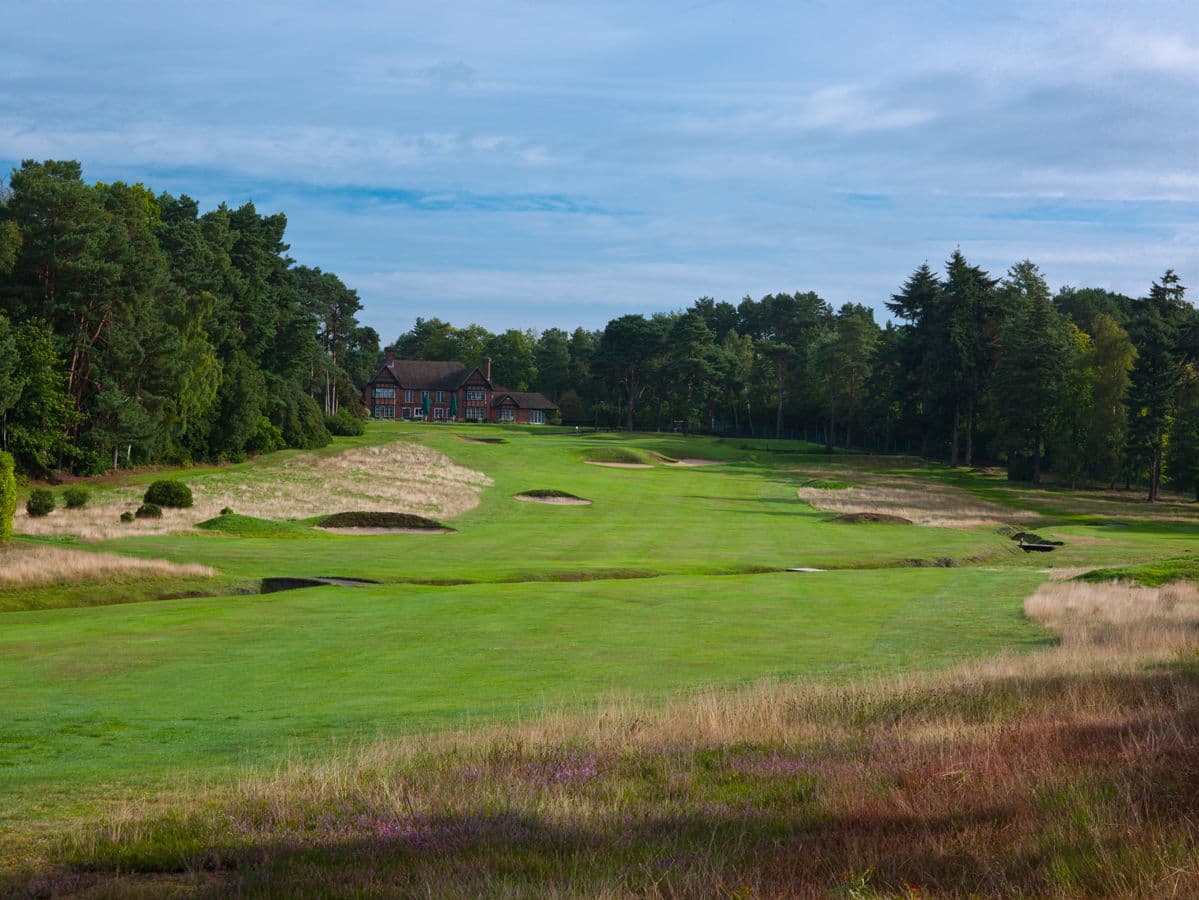
- AddressBodens Ride, Coronation Rd, Winkfield Row, Ascot SL5 9LE, UK
Swinley Forest is a charming golf course set on the famous Surrey/Berkshire sand belt. A few decades ago it was a club frozen in time, exclusive, unusual and totally eccentric. One commentator went as far as to say: “The inescapable impression is that the place fell asleep many years ago and slumbered on for decades, the Rip Van Winkle of golf clubs.”
In fact, you would be hard pressed to describe it as a conventional golf club; there was no captain and despite being in existence for nearly 100 years, little history, except in its members’ heads. However, in the 1990s, scorecards were printed, holes allocated par figures, and competitions introduced for Swinley’s distinguished members.


Harry Colt designed the layout and the course opened for play in 1909 – he modestly described Swinley Forest as his “least bad course”. One of the many delights of Swinley is the ambience, which is hard to define but ubiquitous. It’s also totally unpretentious, having none of the new money glamour of its near neighbours, but more style than all other local clubs combined.
If you were lucky enough to play here around the turn of the new millennium, you would have often had the entire course to yourself. It’s possible you’d have spotted Major So-and-so and his dog, or Lord Such-and-such enjoying a Pimm’s in the clubhouse. It was likely that you’d be able to count other golfers playing the course on one hand. Today things are different. The club has opened its doors to societies and green fee visitors and there’s a tangible optimistic buzz around the place.
Swinley Forest came into being thanks to Edward George Villiers Stanley, 17th Earl of Derby, and one of Sunningdale’s founder members. Lord Stanley became fed up with Sunningdale’s policies and a number of theories as to the real reason(s) exist, which are all documented in Nicholas Courtney’s Swinley Special – One Hundred Years of Harry Colt’s ‘Least Bad Course’.
“Another theory why Lord Derby was disenchanted with Sunningdale was their attitude to women. Lady Stanley became a keen golfer,” wrote Courtney, “yet under the original rule 4 she could not even set foot in Sunningdale, as women ‘be not allowed to play over the links’.”
Lord Stanley mentioned his gripes to King Edward VII, who suggested Lord Stanley build his own course at Swinley Forest, part of the Windsor Great Park. The King provided the land (on a peppercorn rent) and Lord Stanley built the clubhouse and commissioned Harry Colt – who was then the Secretary at Sunningdale – to design the course, and the rest, as they say, is history.
We will make no bones about it, we’re very fond of Swinley and it’s undeniably an attractive course. The short, one-shot holes are simply outstanding and varied in terms of length and design. The site/position of the greensites sets Swinley apart from many of its contemporaries. Although the yardage was only a little over 6,000 yards a decade or so ago, the par of 68 made the going challenging.
Today’s course is longer and more back tees have been added, extending the yardage to 6,400 yards, which may still not sound long by today’s standards, but with a par of 69 it will test and delight not only the scratch golfer but also the high handicapper.
The summer swathes of purple heather and firm fairways that wind their way through mature pines epitomise heathland golf along the London sandbelt. Add in the crafty greens, with false-fronts and cunning run-offs along with old world allure and you have the unique Swinley cocktail, which is very pleasurable indeed.
Course Reviews
Leave a Review
This course has not been reviewed.
If you have played this course, consider .
Thanks for the review
Your review has been successfully submitted and will be reviewed for approval.
Course Reviewed
You’ve already submitted a review for this course.
Course Architect
View All
Harry Colt studied law at Clare College, Cambridge. Twelve months after his 1887 enrolment, he joined the committee of the Cambridge University Golf Club and in 1889 became the club's first captain.

